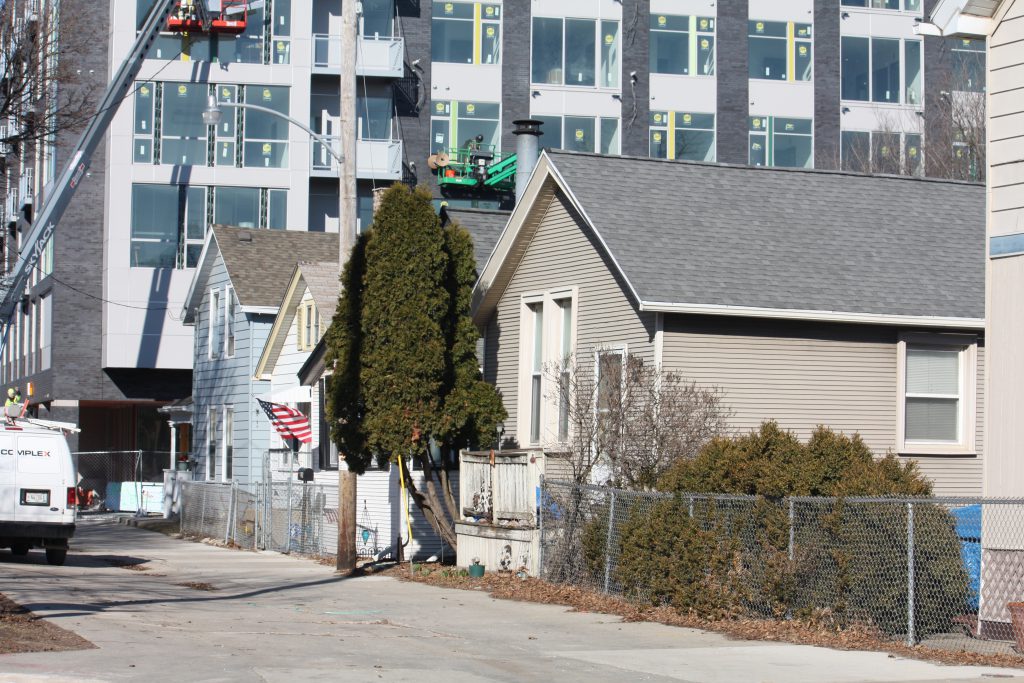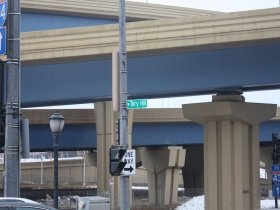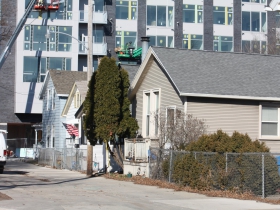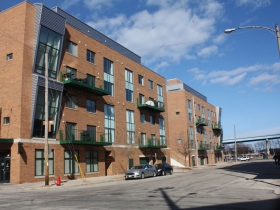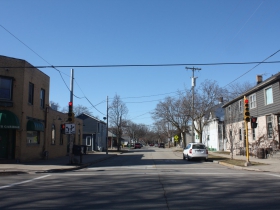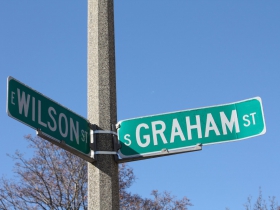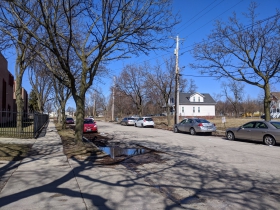19 Streets Named After the Irish
Many of these Milwaukee streets were named after men who emigrated from Ireland.
Welcome to the special Saint Patrick’s Day edition of “City Streets.” It is a fitting time to visit the history of Milwaukee streets with an Irish background.
Generally, streets are named for individuals who are wealthy and/or influential. The Irish immigrants who came to Milwaukee during its founding days in the late 1830s were neither. Far from it, they were poor, and most were illiterate. They had no money to buy land and create new developments.
By 1840 there were about 200 Irish in the city. Many more arrived here during the late 1840s and early 1850s after the potato blight hit Ireland, causing millions to starve or emigrate. They were even poorer than those who had come earlier and were certainly not among the likes of the Farwells, Mitchells, and Holtons who were having streets named for them. It would take decades for the immigrants and their offspring to attain the education, wealth, and prominence that would be necessary to put their names on street signs.
By 1880, there were over 10,000 Milwaukee Irish, counting the immigrants, their children and, for some, their grandchildren. This is when the first five streets were named for them, four of them in Bay View where 20 percent of the population was Irish.
In 1879, Wilson Graham was the first. He was an attorney for a realtor who was subdividing a Bay View farm shortly after the farmer had died. The developer named a street in his subdivision Graham Street, an honor for the native of County Armagh who was born there in 1815.
Three other streets were named for Hibernians in 1880.
East Archer Avenue, a stub of a street adjacent to the new Kinetik apartment building on S. Kinnickinnic Avenue, was named for Patrick Henry Archer, a native of County Waterford who grew up in the Third Ward. He subdivided the Bay View parcel and named the street. He died in Bay View in 1928.
East Russell Avenue, also in Bay View, was named for Thomas Russell, who was born in County Cork in 1843. Russell, an employee of the rolling mills, was a Bay View village trustee when this street was named in 1880. Russell later moved to Colorado.
West Shea Avenue in the Silver City neighborhood was named for Thomas Shea, who was born in County Tipperary in 1830 and came to Milwaukee in his late teens. His early career as a teamster led to his wealth in the freight and real estate business, making him one of the richest Irishmen in the city. Shea survived the sinking of the Lady Elgin, the largest loss of life ever due to disaster on one of the Great Lakes, where 300 people died, about one half of them from the Third Ward. Shea died in 1894.
East Corcoran Avenue in the Third Ward was named in 1888. Cornelius Corcoran was born in County Limerick in 1809. He and his family settled in the Third Ward in 1849 and operated a grocery store and saloon on the corner of N. Jefferson and E. Chicago streets.
West Finn Place, on the North Side, is the namesake of Richard Finn, a plumbing contractor and real estate developer. It was named in 1889 for Finn, who was born in the Third Ward in 1853 to Irish immigrants. He died in 1890.
Both W. Cudahy and W. Carpenter avenues on the South Side were named as a result of the founding of the city of Cudahy in 1892 by Patrick Cudahy, who was born in County Kilkenny in 1849 and brought to Milwaukee as a six-month-old infant. Cudahy established his slaughterhouse and meatpacking plant in his company town and named Cudahy Avenue. His friend and a fellow investor, Michael Carpenter, was born in the Tory Hill area, an Irish neighborhood, in 1845, and operated the Carpenter Baking Company. Cudahy died in 1919 and Carpenter in 1926. Both street names were extended into Milwaukee when the city expanded southward.
North Hackett Avenue was named for Edward Patrick Hackett, who was born in 1857 in the Third Ward, where his County Meath-born father and grandfather settled in 1837. In 1895 the Common Council named this street for Hackett, a successful real estate developer, who died in 1910.
In 1926, the city named a short street W. Somers Street for Peter Somers, the city’s third Irish mayor, who served from 1890 to 1893. He was born on a farm near Menomonee Falls in 1850 to parents from County Roscommon. A lawyer by profession, he was also an alderman and a congressman. He died in Los Angeles in 1924.
West Reynolds Place, a diagonal that connects W. Bruce and W. Pierce streets, was named for Thomas M. Reynolds, a labor leader, Socialist alderman, and saloonkeeper who was born to Irish immigrants in Tory Hill in 1866. He died in 1924 and the city named this street in 1940.
Running alongside I-94, W. O’Connor Place is named for Charles William (Chick) O’Connor, who was an alderman for 24 years between 1916 and 1944. He was born in 1885 in the Tory Hill area to Irish immigrants. O’Connor died in 1961 and the city named this street two years later.
North Callahan Place was named for Robert N. Callahan, a St. Paul, Minnesota, native who was descended from County Cork immigrants. Callahan operated a tavern, the Callahan Club, in the Tory Hill neighborhood during the 1950s and 1960s. The city named the street in 1978.
West Boden Street, near the airport, was named in 1981 for the Boden family who had farmed nearby. Robert Boden was from County Down, where he was born about 1790. He and his family began farming in the area in 1842 and Boden died there during the 1850s.
Streets named for Irishmen who were not Milwaukeans are W. Parnell Avenue, for Irish leader Charles Stewart Parnell, and W. Sheridan Avenue, for Civil War General Philip Sheridan. One street, Tory Hill, is named for the former Irish neighborhood which gave way to the I-94 Interstate along W. Clybourn Street between N. 6th and N. 14th streets.
For more on the Irish in Milwaukee, see From the Emerald Isle to the Cream City.
Streets Named After the Irish
Carl Baehr is the author of Milwaukee Streets: The Stories Behind Their Names and From the Emerald Isle to the Cream City: A History of the Irish in Milwaukee.
If you think stories like this are important, become a member of Urban Milwaukee and help support real, independent journalism. Plus you get some cool added benefits.
City Streets
-
The Curious History of Cathedral Square
 Sep 7th, 2021 by Carl Baehr
Sep 7th, 2021 by Carl Baehr
-
Gordon Place is Rich with Milwaukee History
 May 25th, 2021 by Carl Baehr
May 25th, 2021 by Carl Baehr
-
11 Short Streets With Curious Names
 Nov 17th, 2020 by Carl Baehr
Nov 17th, 2020 by Carl Baehr


